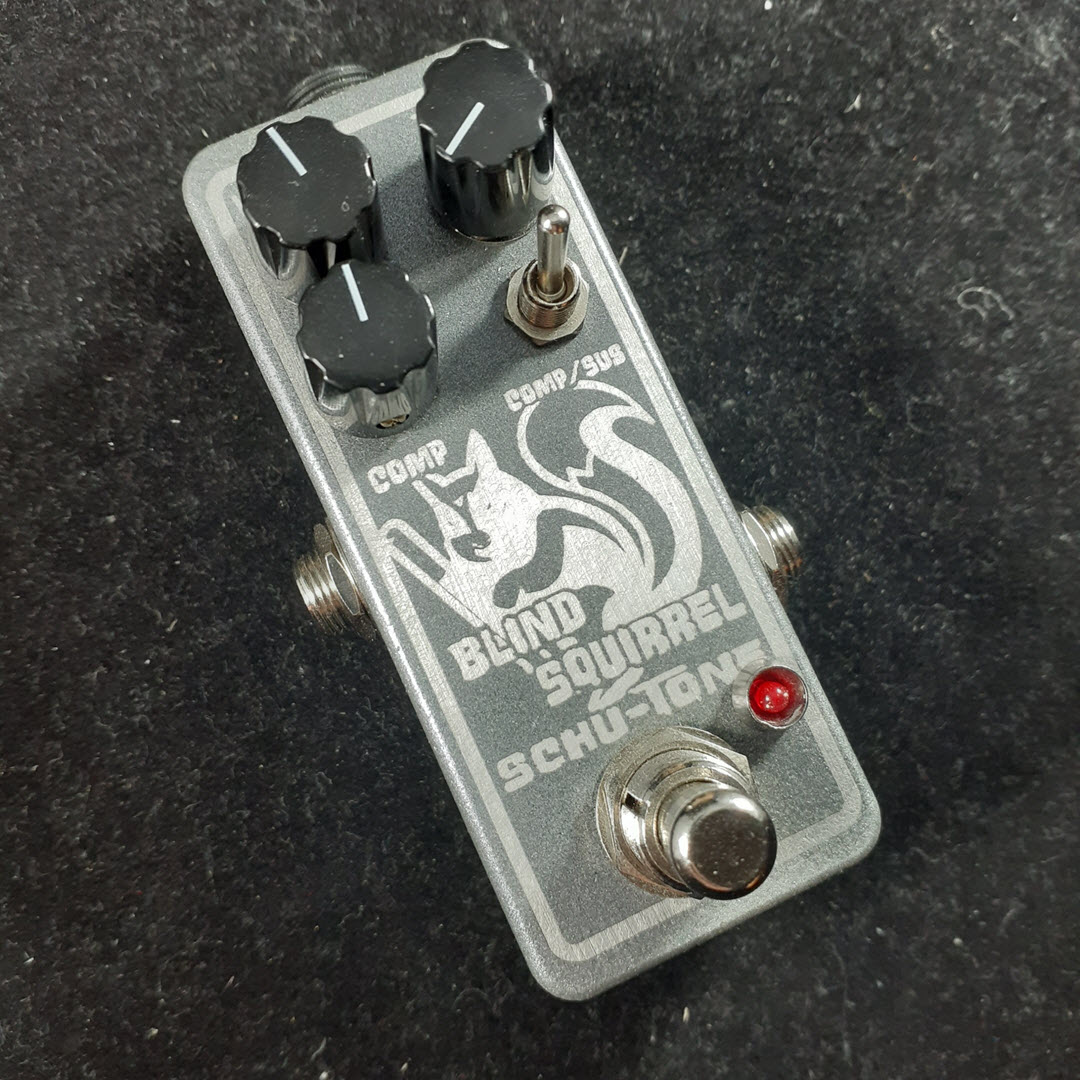Feral Feline
Well-known member
The Short of It:
Need a compact small parts-count compressor to reside with and feed my Octaver.
The Long of It:
In many forums, in many threads, many suggestions are made on how to improve the tracking of (down-) octavers and synth pedals alike; the main suggestions being boost the signal input and pre-compression.
I'm looking for Suggestions/Pros/Cons for a COMPACT compressor circuit, preferably with minimal controls.
Craig Anderton has suggested a 4:1 ratio with a fairly high threshold, sans "pop" at outset and smooth sustain. He also mentions some EQ tricks, but I'll leave EQ aside for now.
Potential compact compressors I'm considering (in no particular order):
I'm okay with burying a couple knobs internally via trimmers, but something that is a six-knob comp probably isn't going to be compact enough to stick inside a build paired with an Octaver or Synth circuit — 's gattabee cawmpacked! TC Electronic Sustain+ParaEQ might be an exception.
Comps in 1590A good, 1590B-sized okay, comp needing 1590BB bad.
Needs to be good on bass.
Any other suggestions? (please, no Dyna/Ross)
The list above is really just a drop in the compressor-bucket, I know that's still a big list, which is partly why I'm soliciting help in reducing it. Any thoughts on how to narrow the list down?
Lastly ... though I may have listed a variant above because I briefly looked at a layout and not the schematic...I'm not interested in the Dyna/Ross at all.
[EDIT: Added Pellucid, see post #8]
Need a compact small parts-count compressor to reside with and feed my Octaver.
The Long of It:
In many forums, in many threads, many suggestions are made on how to improve the tracking of (down-) octavers and synth pedals alike; the main suggestions being boost the signal input and pre-compression.
So I'd like to make a combo pedal with a built-in compressor before the octaver/synth circuit.
Less tap dancing and frees up my regular compressor for other duties...
I'm looking for Suggestions/Pros/Cons for a COMPACT compressor circuit, preferably with minimal controls.
Craig Anderton has suggested a 4:1 ratio with a fairly high threshold, sans "pop" at outset and smooth sustain. He also mentions some EQ tricks, but I'll leave EQ aside for now.
Potential compact compressors I'm considering (in no particular order):
- Hollis Flatline [Madbean Afterlife & 4:1],
- Orange Squeezer and variants (such as Toadworks' Mr Squishy, Ringtone, etc),
- Rothwell Love Squeeze,
- Bearhug (Jon Patton's FET-based comp),
- Bearfoot Pale Green,
- Moosapotamus' Fat & Pretty / Blomdahl's LA-Light,
- Mad Professor Forest Green (has a SUSTAIN mode),
- GGG's Ibanez BP-10/CP-10 copy (cool, uses a BA6110 instead of the CA3080/13600/13700),
- Wayne Kirkwood's TOKC (That One Knob Comp),
- Engineer's Thumb (simple 2-knobber not the 5-knob),
- Demeter Compulator,
Carlin Comp, [Too Noisy]- DOD 280,
- DOD Compressor Sustainer FX80B/FX82 (same circuit),
- PAIA Infinity++
, - EHX Black Finger,
- Hexe Tadek,
- mictester’s got a bunch: REALLY CHEAP COMPRESSOR, SIMPLE COMP, BASS COMP, COMPRESSOR SUSTAINER (w/&wo clipping), etc
- MXR Command Sustain,
Weak Joe,too many knobs- Really Simple Transistor Compressor,
- Walco Sustainer
- Sam Hay Opticomp,
- EA Comp (purportedly good for bass)
- Craig Anderton Comp
- Clean Squeeze Optical by Myriad Design
- Q&D Cram It, AussieMart and other LM386wMOSFET circuits
- Zirconia Jr (Diamond without the EQ) / Fred Brigg's Diamanté
- PELLUCID
- Trash Compactor, MBP
I'm okay with burying a couple knobs internally via trimmers, but something that is a six-knob comp probably isn't going to be compact enough to stick inside a build paired with an Octaver or Synth circuit — 's gattabee cawmpacked! TC Electronic Sustain+ParaEQ might be an exception.
Comps in 1590A good, 1590B-sized okay, comp needing 1590BB bad.
Needs to be good on bass.
Any other suggestions? (please, no Dyna/Ross)
The list above is really just a drop in the compressor-bucket, I know that's still a big list, which is partly why I'm soliciting help in reducing it. Any thoughts on how to narrow the list down?
Lastly ... though I may have listed a variant above because I briefly looked at a layout and not the schematic...I'm not interested in the Dyna/Ross at all.
[EDIT: Added Pellucid, see post #8]
Last edited:

![Afterlife2020 schematic [Hollis Flatline 1590A] MADBEAN.gif Afterlife2020 schematic [Hollis Flatline 1590A] MADBEAN.gif](https://pedalpcb-forum.nyc3.digitaloceanspaces.com/data/attachments/80/80338-53d95178b27c6089eb3e5709075df3ae.jpg?hash=U9lReLJ8YI)


